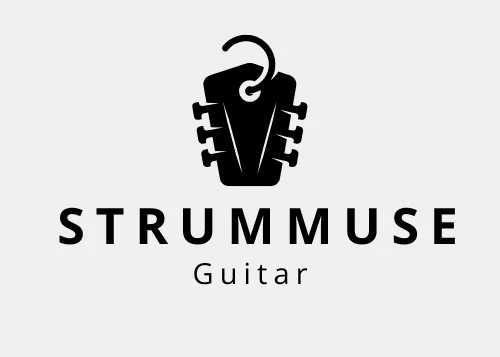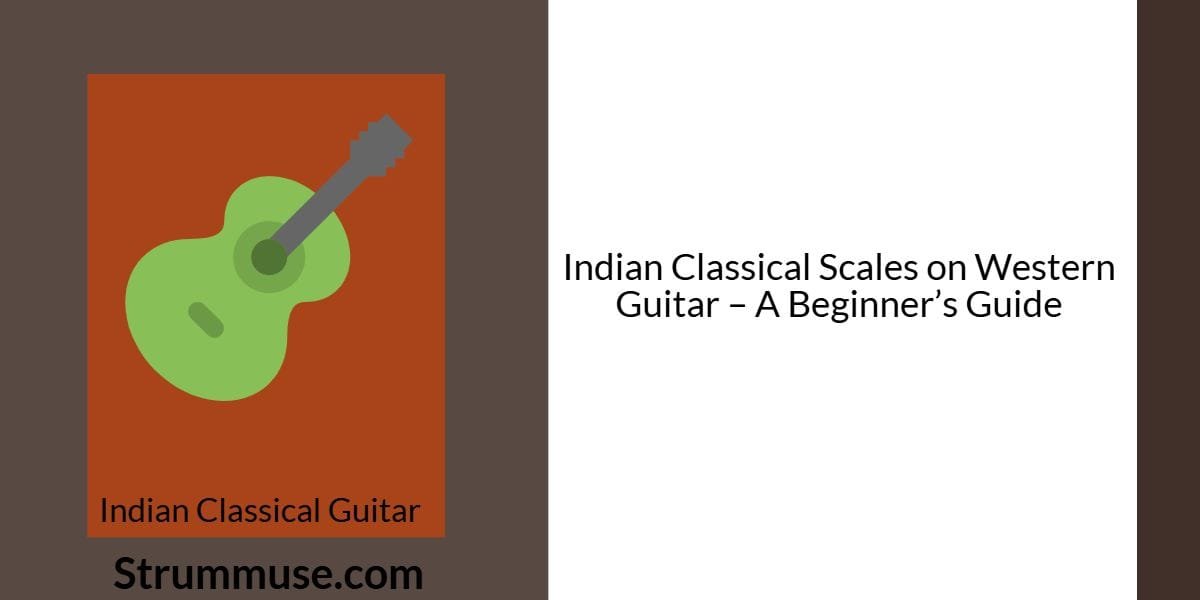Introduction
Most guitarists begin by learning chords and western scales like major, minor, and pentatonic. But what if you want to explore the rich world of Indian classical music on guitar?
Good news: It’s not only possible — it’s powerful. With the right approach, you can play Indian ragas and classical scales on a western guitar, blending melodic expression with your existing fretboard knowledge.
This beginner-friendly Indian classical guitar guide will help you blend the power of Indian ragas with modern guitar playing — both acoustic and electric.
Let’s explore how to bring the sounds of the sitar, sarod, and bansuri to your fretboard.
1. Understanding the Basics: Ragas vs Western Scales
Western music is largely harmony-focused — chords, progressions, and key signatures.
Indian classical music is melody and expression-driven, with ragas being central. A raga is not just a scale — it’s a mood, a story, a specific arrangement of notes with unique ascending and descending movements.
| Concept | Western Music | Indian Classical Music |
|---|---|---|
| Scale Type | Major, Minor, Pentatonic | Ragas (e.g., Yaman, Bhairavi) |
| Mood Mapping | Limited | Deeply emotional |
| Improvisation | Optional | Core to performance |
2. Matching Indian Notes to Western Notes
Here’s how Sargam (Indian solfege) maps to Western notes:
| Sargam | Western Note (in C) |
|---|---|
| Sa | C |
| Re | D |
| Ga | E |
| Ma | F |
| Pa | G |
| Dha | A |
| Ni | B |
| Sa’ | C (Octave) |
Once you understand this mapping, you can translate ragas into fretboard patterns and better understand how to apply Sargam on guitar.
3. Popular Ragas You Can Play on Guitar
Here are a few beginner-friendly ragas on guitar and their Western note equivalents (assuming C as root):
🎶 Raga Yaman (Evening Raga)
- Notes: C – D – E – F# – G – A – B – C
- Western Scale: Lydian Mode (Major scale with sharp 4th)
🎶 Raga Bhairavi (Morning Raga)
- Notes: C – Db – E – F – G – Ab – B – C
- Western Scale: Mix of harmonic minor + flat 2 & 6
🎶 Raga Durga
- Notes: C – D – F – G – A – C
- Western Scale: Pentatonic (but with Raga-style phrasing)
These examples make it easy to play Indian classical scales on guitar even if you’re trained in Western music.
4. Indian Guitar Techniques to Play Ragas
- Use slides (meend) between notes instead of hammer-ons only
- Add vibrato (gamak) for expression
- Focus on longer note sustains
- Practice ascending and descending (Arohana and Avarohana) differently
🎯 Pro Tip: Use the neck pickup with clean tone and light reverb to mimic classical sound textures — great for those learning how to play Indian ragas on guitar.
5. Tuning Considerations
Some Indian classical guitarists prefer alternate tunings for better ragas:
- Open C (CGCGCE)
- DADGAD tuning
But you can start in standard tuning — just know your note positions well. You can play Indian music on acoustic guitar just as effectively by focusing on phrasing.
6. Improvisation with Indian Flavor
Once you know the scale of a raga:
- Improvise slowly, note by note
- Avoid fast runs — focus on emotional phrasing
- End your phrases on Sa or Pa for resolution
Indian classical guitar playing is about storytelling — not speed. With practice, you’ll learn how to blend Indian and western music on guitar.
7. Recommended Learning Resources
- Books: “Raga Guide”, “Hindustani Sangeet Paddhati”
- Guitarists to Watch: Pandit Debashish Bhattacharya, Prasanna, Sanjay Joseph
- Online: StrumMuse Indian Classical Guitar Tutorials
FAQs
Q. Can I play Indian classical music on a normal acoustic guitar?
Yes! Standard-tuned acoustic or electric guitars work fine for ragas — focus on technique, not gear. You can start exploring Indian classical scales on guitar with basic gear.
Q. Is learning ragas helpful for western music too?
Absolutely. It improves phrasing, expression, and your improvisational ear. Many Indian guitar techniques also enhance blues and jazz phrasing.
Q. Do I need to learn classical vocals to play ragas on guitar?
Not required — but understanding the Sargam on guitar system helps a lot.
Conclusion
Western guitar and Indian classical music are from different worlds — but when combined, they create magic.
Explore ragas not as rigid scales but as emotional expressions. You don’t need a sitar to sound soulful — your fretboard is enough.
With this Indian classical guitar guide, keep exploring, keep improvising — and learn how to beautifully blend Indian and western music on guitar. 🎸✨


1 thought on “Indian Classical Scales on Western Guitar – A Beginner’s Guide”